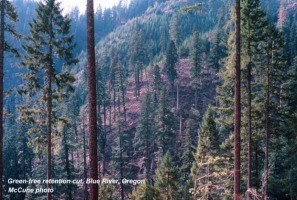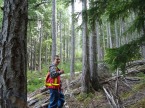

Predicting the future species composition within a stand is an important stand-level objective. It has typically been believed that shade tolerance is the driving factor in determing the successional role and future composition of species within stands. Therefore, forest managers have traditionaly utilized shade tolerance rankings when making stand-level objectives. However, the shade tolerance of species have been shown to be highly variable genetically and across microclimatic gradients. The increasing pressure from the general public and environmental stakeholders for clearcutting alternatives has forced foresters to retain canopy trees which create environmental microsites. The site specific response of planted seedlings to these canopy retention prescriptions will increase ability to predict future species composition within complex stands.Three commercial tree species (Western Redcedar, Thuja plicata; Western Hemlock, Tsuga heterophylla; and Douglas-fir, Pseudotsuga menziesii) were planted in the wet Interior Cedar Hemock (ICH) biogeoclimatic zone of British Columbia. Three retention levels were randomly assigned to 2 (or 3), one hectare blocks divided into 8 sub-plots. Three dominant understory planted tree species were selected within 4 m of each sub-plot center. The effect of retention level and local light levels on 3 parameters for tree volume (collar diameter, diameter at breast height (DBH), and height) was studied. Although retention levels had high variation in light levels, the light levels between retention levels were significantly different (p<0.001). The majority of low light emvironments were found in the 100% retention treatments. The growth response of Douglas-fir differed in low light environments and the 100% retention treatment (unharvested). Understory volume gains did not differ between harvested sites, but harvested sites had signifcantly greater understory volume gains than unharvested sites. Western hemlock had the greatest growth preformance and shade tolerance.

Kyle Lochhead
MSc. Student, Forest Biology and Management
University of Alberta
Edmonton, Alberta
(780) 492 6472
The data and results obtained in the study are fictional and are for the purposes of RenR480